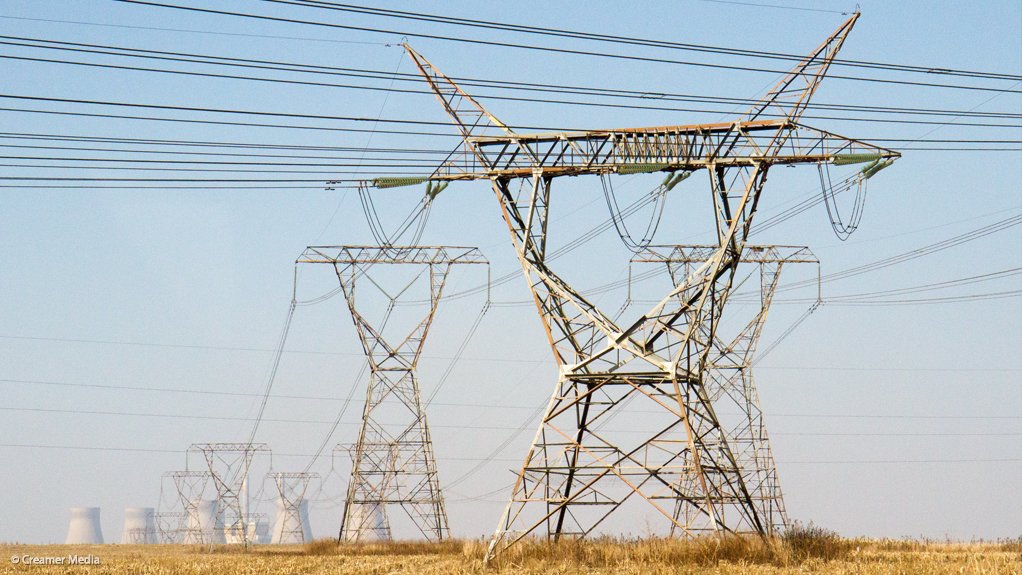Government and business have set a goal of increasing South Africa’s electricity generation capacity by 10.6 GW by the end of 2025 as part of ongoing collaborative efforts to tackle growth-sapping power disruptions and reduce the intensity and almost daily frequency of loadshedding by year-end.
In a briefing held following the latest meeting between President Cyril Ramaphosa’s Cabinet and those senior business leaders who have committed to supporting government in overcoming its loadshedding, logistics and crime crises, the Presidency’s Rudi Dicks said the capacity could arise from multiple sources, including by recovering capacity from Eskom’s unreliable coal fleet.
The lion’s share, however, would arise from ongoing solar rooftop investment, public procurement and utility-scale projects being pursued by various companies on the back of a reform allowing distributed plants of any size to proceed without a licence, even when using the grid to wheel electricity.
Eskom’s Generation Recovery Plan would focus on operational improvements at Matla, Majuba, Kendal and Tutuka, as well as within Rotek, and would seek to build on recent partnership successes with business at Kusile, Kriel and Matla.
However, Dicks said it would also hinge on securing “many more skilled resources” over and above the support that had been provided so far by the 75 individuals who had already been assigned to assist on a pro bono basis.
While some services would continue to be delivered on that basis, work was also under way by Eskom, business and the National Treasury on a proposed mutual cooperation agreement (MCA) to enable Eskom to “procure skilled experts, strategic parts and ringfenced projects”.
Business for South Africa’s Martin Kingston noted that such an agreement was already in place between Transnet and the Richards Bay Coal Terminal, which he described as a “cost-recovery mechanism”.
Dicks said the MCA sought to formalise the partnership between Eskom and the private sector, while stressing that it would be seeking a deal that not only complied with legislation and supply-chain management regulations but still allowed for some “pro bono work to continue”.
“Pro-bono support has already been provided but this does not cover technical engineering expertise to address both the main and auxiliary plant problems,” Dicks added.
Kingston, meanwhile, offered an assurance that the MCA with Eskom would be transparent and structured to either remove or manage any potential conflicts of interest.
The proposed MCA follows the recent release of a report commissioned by the National Treasury in 2023 into the state of the Eskom coal power stations, in which the Vgbe-led report authors described the State-owned utility’s governance structure and processes as “dysfunctional”.
They made several recommendations for improving the management structure, including the establishment of an interim team of independent experts, outside of Eskom and reporting to the National Treasury, whose members would be situated at the stations to follow up key risk areas and intervene if required.
Dicks said the Vgbe report had confirmed the National Energy Crisis Committee’s (Necom’s) own analysis of the challenges, as well as what the required focus to ensure improved plant performance was.
GRID FOR UPCOMING BID WINDOW?
Outside of Eskom, business and government also agreed that actions should be taken to support ongoing private investment at a rooftop and utility scale, as well as ensure the success of the public procurement bid windows launched for renewables, gas-to-power and battery storage.
Together, these private generation investments were expected to provide the majority of the additional 10.5 GW of capacity to be added or recovered by the end of 2025.
It was also agreed that Eskom and the National Energy Regulator of South Africa should take urgent steps to ensure that there was grid capacity available for Bid Window Seven (BW7) of the renewables programme to avoid a repeat of BW6, when none of the wind projects that bid for a 3 200 MW allocation advanced to financial close. This, after Eskom claimed that there was no longer grid capacity available to connect wind projects in the Eastern, Western and Northern Cape.
Meanwhile, Adrian Gore, who is co-convenor of the business delegation and Discovery CEO, stressed that the partnership with government, which was initiated nine months ago, was showing tangible results, including in the area of loadshedding.
The joint statement claimed that loadshedding was 61% lower in the first two months of 2024 when compared with the same period last year.
Gore reported that the private sector had, to date, contributed more than R170-million to the partnership, and had mobilised over 350 technical experts in support of the three focus areas.
It was also confirmed that the Resource Mobilisation Fund, established to procure and donate resources to support the implementation of the Energy Action Plan, had raised some R100-million, of which R25-million had been drawn down to fund expertise to support the Necom.
Business was now assessing extending the model to support the National Logistics Crisis Committee and the Joint Initiative on Crime and Corruption.
EMAIL THIS ARTICLE SAVE THIS ARTICLE ARTICLE ENQUIRY
To subscribe email subscriptions@creamermedia.co.za or click here
To advertise email advertising@creamermedia.co.za or click here











